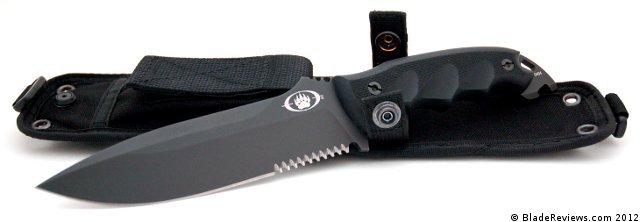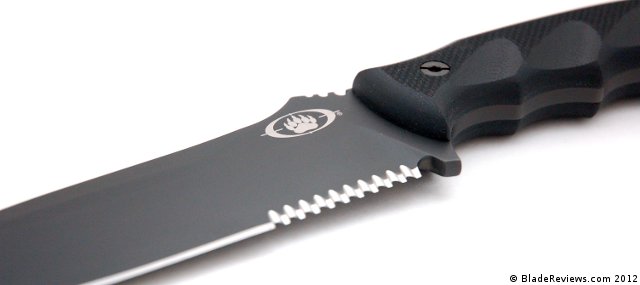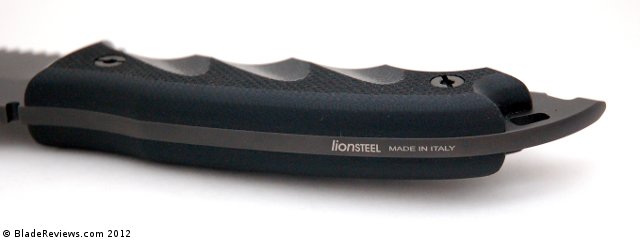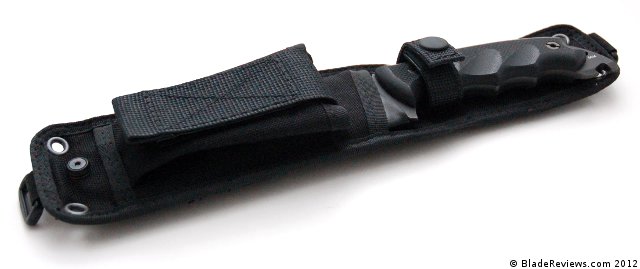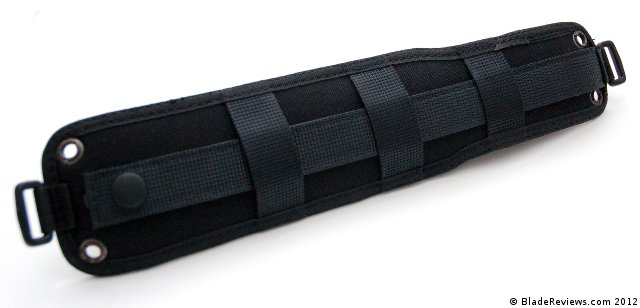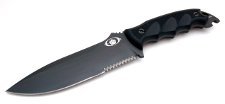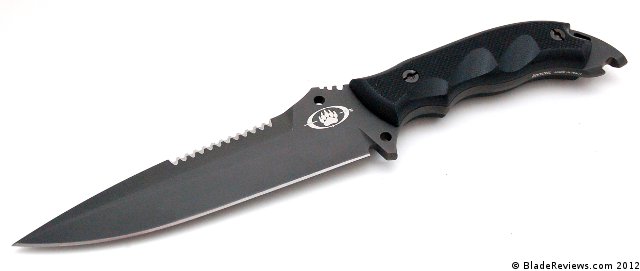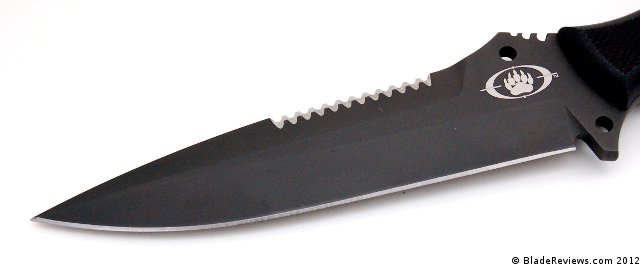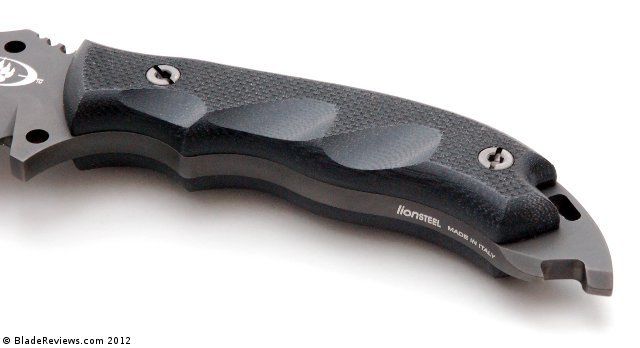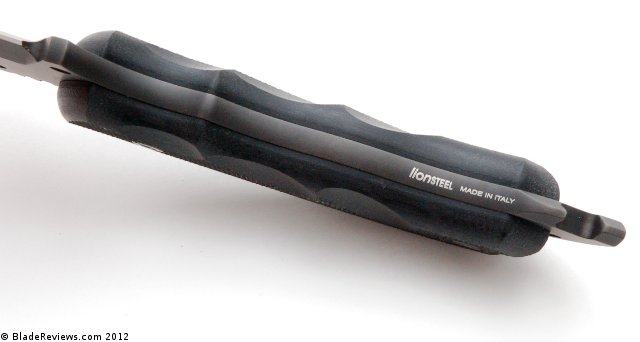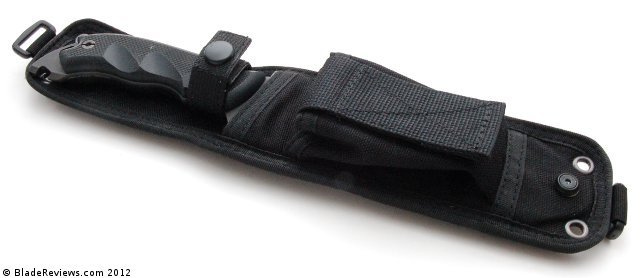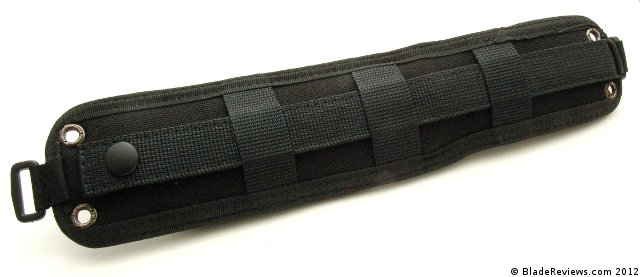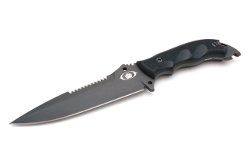Last Updated: February 13, 2018
For many knife collectors the Strider SnG is a holy grail of sorts. Much like the Chris Reeve Sebenza, the Strider SnG represents the top of the line for production grade folders. Toss in a Hinderer XM, and you have what many knife collectors like to call “the holy trinity” of high end production blades.
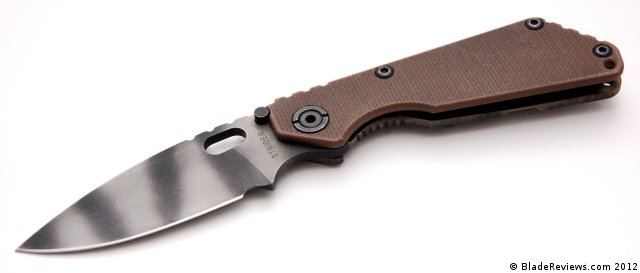
Buy the Strider SnG at BladeHQ
I am by no means an authority on Strider, but if you are unfamiliar with the brand Strider was founded some time in the mid 90’s by custom knifemakers Mick Strider and Duane Dwyer. The company is headquartered in San Marcos, California, and their designs draw heavily from the strong military background at Strider. They make a number of fixed blade and folding designs, and have fulfilled contracts for the U.S. Military in the past.
Strider knives aren’t cheap, but the company has built a reputation on quality and has gained an extremely loyal following. I have always found the bold lines of their folders intriguing, and the rugged nature of the knives further piqued my interest. The SnG is their mid size folder, resting comfortably between the large SMF and the small PT.
General Dimensions and Blade Details
The SnG has an overall length of 8.25 inches, a 3.5 inch blade, and a weight of 4.4 ounces. The SnG could work well as a larger EDC, or as more of a large utility / tactical (self defense) knife. I will say that I was surprised at how lightweight the knife felt. With the SnG’s reputation as a hard use blade I expected some sort of folding brick to show up in my mailbox. Instead, I was pleasantly surprised with how manageable the knife felt. It quickly found its way into my pocket.
The blade on the SnG is a modified drop point design. My particular SnG happens to be flat ground, but I have seen hollow ground blades and tanto versions as well. Of course there are custom versions of the knife in every grind imaginable. Blade thickness on this knife is just over 4mm thick (.165″) and tapers down to a stout tip. Despite being a near full flat grind the SnG is quite thick behind the edge, and I found the cutting performance underwhelming. This is surprising considering the $400 price tag (intuitively, I would somehow expect the knives to cut better as the price went up), but when you consider the hard use nature of the blade it does make sense – this knife is designed to stand up to more than just cutting. The signature Strider tiger stripes are a result of a black oxide coating that has been partially sandblasted off. The tiger stripes are optional, but it’s a unique feature that is distinctively Strider.
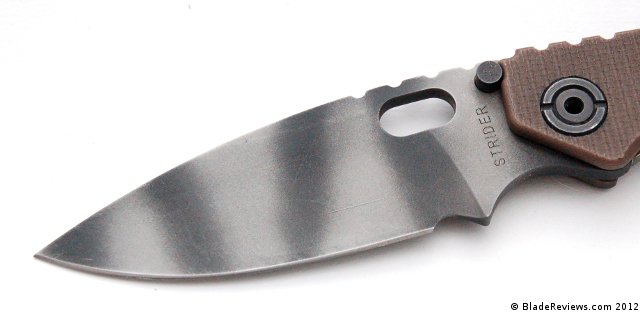
Blade steel on this particular model is S30V. S30V is interesting because it was formulated specifically for knives, and is something of a collaboration between Chris Reeve and Crucible. S30V is a proven steel, and my experience with the steel has generally been very favorable. S30V sharpens without too much trouble, holds a nice edge, and is resistant to rust and corrosion. Strider’s heat treat for S30V was originally formulated by Paul Bos, an innovator in the world of heat treating who is perhaps best known for his in-house work with Buck (Strider used to collaborate heavily with Buck). Again, the thick geometry of the blade didn’t make this the most exceptional cutter, but S30V got the job done whether it was rope, cardboard, or wood.
Handle, Ergonomics, and Pocket Clip
The handles of the SnG are special because they feature a one-piece G10 scale and backspacer mated to a titanium integral lock. You do get a choice of color with the SNG (green, black, and brown are standard – various other colors are occasionally available), and Strider also offers them in concealed carry and Gunnar grip configurations as well. What is shown here is their standard “lego” style handle with brown G10 and a flamed titanium locking side. Everything is nicely cut out, well finished, and perfectly mated together. Oddly enough, what really impressed me about the handle of the SNG is the hardware. The body is held together with over-sized black domed screws, and the pivot is an equally beefy proprietary piece. However, I did notice one issue with the handle. The blade partially blocks the lanyard hole. C’est la vie if you want a Strider SnG.
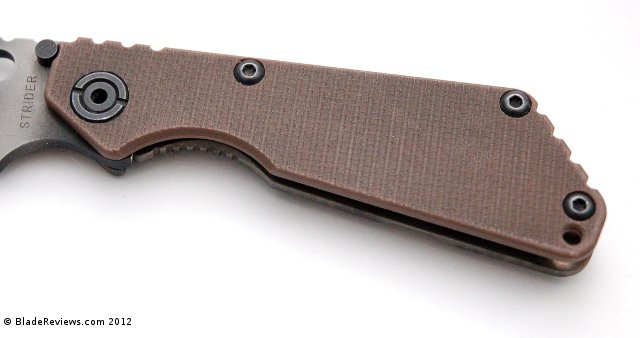
From an ergonomics standpoint the SnG is a good size knife packed with features. I had plenty of room to maneuver my larger hand around this knife, and it accommodates a good number of grips. In the traction department the SnG is loaded down with jimping on both the spine and pommel for a secure hold in both forward and reverse grips. This is great if you plan on putting the SnG into a more “tactical” role, but I found the jimping extremely uncomfortable under hard cutting. Plan to wear gloves if you want to seriously test the SnG. The forward finger choil is great for choking up and does give you some versatility under use. All in all I found the SnG reasonably comfortable for a folding knife, but it’s not my first choice for sustained cutting.
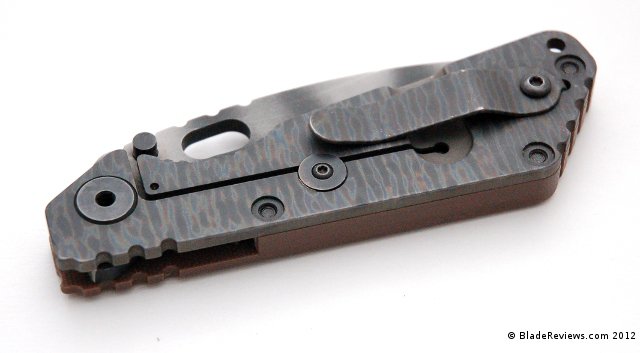
Strider includes a removable right side tip-up carry pocket clip on every SnG. The clip is made of titanium, features good retention, and slips in and out of the pocket with relative ease. It’s a nice secure clip – a must when you are toting around a $400 folder. I’m sure many southpaws would prefer a reversible clip as lefty SNGs are quite rare and expensive.
All in all, I found that the SnG carried really well. The pocket clip doesn’t carry the knife very deep, but the knife itself is slim and feels light for its size. While it isn’t my first choice for school or the office, I do not mind having this as my primary EDC, and didn’t find it overly bulky or uncomfortable in the pocket.
Deployment and Lockup
The SnG uses an oval thumb hole for deployment. The thumbhole is easy to get at and the knife opens fast and smooth. It’s not a knife that flies open, but with a little wrist action I can get it done. Inside there are two bronze washers surrounding that massive pivot. The action is smooth and very pleasant. There are what appears to be thumb studs on the blade, but they are actually stop pins and don’t work super well as thumb studs. The ball detent on this knife is very good and it’s fun to watch the blade get “sucked in” upon closing.
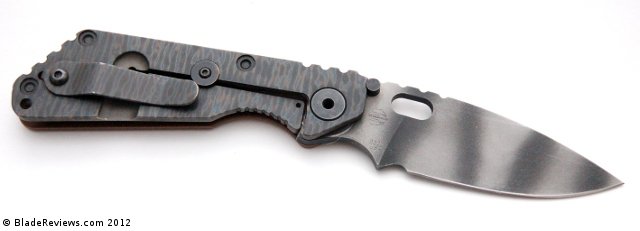
Lockup is of course established via a beefy titanium framelock. This particular knife is a 9th generation SnG, and benefits from newly redesigned flat cut lock geometry. I have heard stories about Striders developing blade play, but this knife has held up really well. I have a very slight amount of side to side play, and no up and down. I’d tune up the pivot, but it requires a proprietary wrench that I haven’t acquired yet (really, it should come standard at this price). Lockup is pretty early and the titanium lock bar doesn’t stick at all. It’s also worth mentioning there is a small Hinderer lockbar stabilizer on the handle to prevent over extension of the lock.
Strider SnG – Final Thoughts
For many knife collectors the SnG will be something of a final destination in their knife collecting journey. It is an iconic American hard use folder with bold lines, contrasting finishes, and that kind of rough and tumble bravado that pairs well with a low slung Harley Davidson, a strong cigar, and several fingers of really good bourbon. I can totally see the appeal, and it’s been a lot of fun carrying, using, and admiring this really sweet folding knife.
However, I gotta be real here for a moment. If you are looking at knives from a purely practical perspective the SnG is functionally no better than something like a Spyderco Paramilitary 2. It’s not going to cut any better, the lock isn’t going to be any stronger, and it won’t feel any better in hand. But that’s ok, this is the nature of a luxury good. My $40 Casio keeps better time than a $5,000 Rolex – but I’ll be damned if I don’t own a Submariner one day. You buy a knife like this because you want it, and have a few extra dollars to spare.
That said, as a collector and an enthusiast I do think you get something more with the Strider. The G10 backspacer seamlessly integrated with the handle scale, the beefy custom hardware, the flamed titanium lockbar – these are a few details that make the SnG stand out in a crowd. You get something unique, tough, capable, and strangely refined. The only issue I could spot was the partially blocked lanyard hole – besides that this is a really meticulously executed knife. When it comes to titanium framelock hard use folders the guys at Strider know how to do it right, and the quality, materials, fit, finish, warranty, and U.S. manufacturing are all there. Simply said, it’s a great knife.
So if you want to buy an SnG, I say buy an SnG. I don’t think it’s perfect, and it’s definitely a luxury item, but at the end of the day it’s a really nice knife. While it may be the first Strider in my collection, I guarantee it wont be the last.
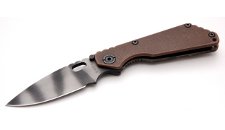
Strider SnG – $400
From: BladeHQ
I recommend purchasing the Strider SnG at BladeHQ. Please consider that buying anything through any of the links on this website (including Amazon) helps support BladeReviews.com, and keeps the site going. As always, any and all support is greatly appreciated. Thank you very much.
